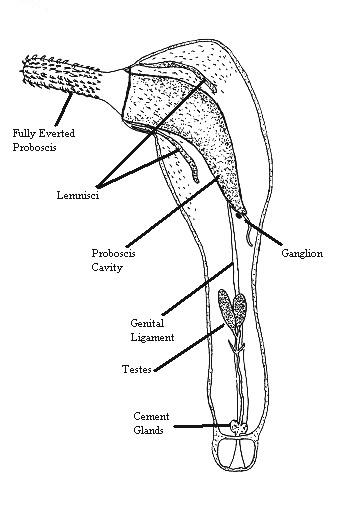|
Acanthocephala (bug)
''Acanthocephala'' is a New World genus of true bugs in the family Coreidae. The name is derived from the Greek akanth- meaning "thorn/spine" + kephale meaning "head" This name is in reference to the spine on the front of the head. Species The known species of ''Acanthocephala'' are: * '' A. affinis'' (Walker, 1871) * '' A. alata'' (Burmeister, 1835) * '' A. angustipes'' (Westwood, 1842) * '' A. apicalis'' (Westwood, 1842) * '' A. arcuata'' (Uhler, 1884) * '' A. bicoloripes'' (Stål, 1855) * '' A. concolor'' (Herrich-Schäffer, 1841) * '' A. confraterna'' (Uhler Uhler is an ''Ortsgemeinde'' – a municipality belonging to a ''Verbandsgemeinde'', a kind of collective municipality – in the Rhein-Hunsrück-Kreis (district) in Rhineland-Palatinate, Germany. It belongs to the ''Verbandsgemeinde'' of Kaste ..., 1871) * '' A. consobrina'' (Westwood, 1842) * '' A. dallasi'' (Lethierry & Severin, 1894) * '' A. declivis'' (Say, 1832) * '' A. equalis (Westwood, 1842) * '' A. femor ... [...More Info...] [...Related Items...] OR: [Wikipedia] [Google] [Baidu] |
Acanthocephala Terminalis
''Acanthocephala terminalis'' is a species of leaf-footed bug in the family Coreidae Coreidae is a large family of predominantly sap-sucking insects in the Hemipteran suborder Heteroptera. The name "Coreidae" derives from the genus ''Coreus'', which derives from the Ancient Greek () meaning bedbug. As a family, the Coreidae .... It is found in North America. References Further reading * * External links * Articles created by Qbugbot Insects described in 1852 terminalis {{Coreidae-stub ... [...More Info...] [...Related Items...] OR: [Wikipedia] [Google] [Baidu] |
Acanthocephala Equalis
Acanthocephala ( Greek , ', thorn + , ', head) is a phylum of parasitic worms known as acanthocephalans, thorny-headed worms, or spiny-headed worms, characterized by the presence of an eversible proboscis, armed with spines, which it uses to pierce and hold the gut wall of its host. Acanthocephalans have complex life cycles, involving at least two hosts, which may include invertebrates, fish, amphibians, birds, and mammals. About 1420 species have been described. The Acanthocephala were thought to be a discrete phylum. Recent genome analysis has shown that they are descended from, and should be considered as, highly modified rotifers. This unified taxon is known as Syndermata. History The earliest recognisable description of Acanthocephala – a worm with a proboscis armed with hooks – was made by Italian author Francesco Redi (1684).Crompton 1985, p. 27 In 1771, Joseph Koelreuter proposed the name Acanthocephala. Philipp Ludwig Statius Müller independently called ... [...More Info...] [...Related Items...] OR: [Wikipedia] [Google] [Baidu] |
Acanthocephala Thomasi
''Acanthocephala thomasi'', the giant agave bug, is a species of leaf-footed bug in the family Coreidae. It is found in Central America and North America. References Further reading * * External links * Articles created by Qbugbot Insects described in 1872 thomasi Hemiptera of Central America {{Coreidae-stub ... [...More Info...] [...Related Items...] OR: [Wikipedia] [Google] [Baidu] |
Acanthocephala Surata
Acanthocephala ( Greek , ', thorn + , ', head) is a phylum of parasitic worms known as acanthocephalans, thorny-headed worms, or spiny-headed worms, characterized by the presence of an eversible proboscis, armed with spines, which it uses to pierce and hold the gut wall of its host. Acanthocephalans have complex life cycles, involving at least two hosts, which may include invertebrates, fish, amphibians, birds, and mammals. About 1420 species have been described. The Acanthocephala were thought to be a discrete phylum. Recent genome analysis has shown that they are descended from, and should be considered as, highly modified rotifers. This unified taxon is known as Syndermata. History The earliest recognisable description of Acanthocephala – a worm with a proboscis armed with hooks – was made by Italian author Francesco Redi (1684).Crompton 1985, p. 27 In 1771, Joseph Koelreuter proposed the name Acanthocephala. Philipp Ludwig Statius Müller independently called ... [...More Info...] [...Related Items...] OR: [Wikipedia] [Google] [Baidu] |
Acanthocephala Latipes
{{Coreidae-stub ...
''Acanthocephala latipes'' is a species of leaf-footed bug in the family Coreidae. It is found in Central and South America. References * Hemiptera of Central America Hemiptera of South America Insects described in 1782 latipes ''Latipes'' is a genus of air-breathing land slugs, terrestrial pulmonate gastropod mollusks in the family Veronicellidae, the leatherleaf slugs. Species Species within the genus ''Latipes'' include: * ''Latipes pterocaulis ''Latipes'' i ... [...More Info...] [...Related Items...] OR: [Wikipedia] [Google] [Baidu] |
Acanthocephala Heissi
Acanthocephala ( Greek , ', thorn + , ', head) is a phylum of parasitic worms known as acanthocephalans, thorny-headed worms, or spiny-headed worms, characterized by the presence of an eversible proboscis, armed with spines, which it uses to pierce and hold the gut wall of its host. Acanthocephalans have complex life cycles, involving at least two hosts, which may include invertebrates, fish, amphibians, birds, and mammals. About 1420 species have been described. The Acanthocephala were thought to be a discrete phylum. Recent genome analysis has shown that they are descended from, and should be considered as, highly modified rotifers. This unified taxon is known as Syndermata. History The earliest recognisable description of Acanthocephala – a worm with a proboscis armed with hooks – was made by Italian author Francesco Redi (1684).Crompton 1985, p. 27 In 1771, Joseph Koelreuter proposed the name Acanthocephala. Philipp Ludwig Statius Müller independently called ... [...More Info...] [...Related Items...] OR: [Wikipedia] [Google] [Baidu] |



